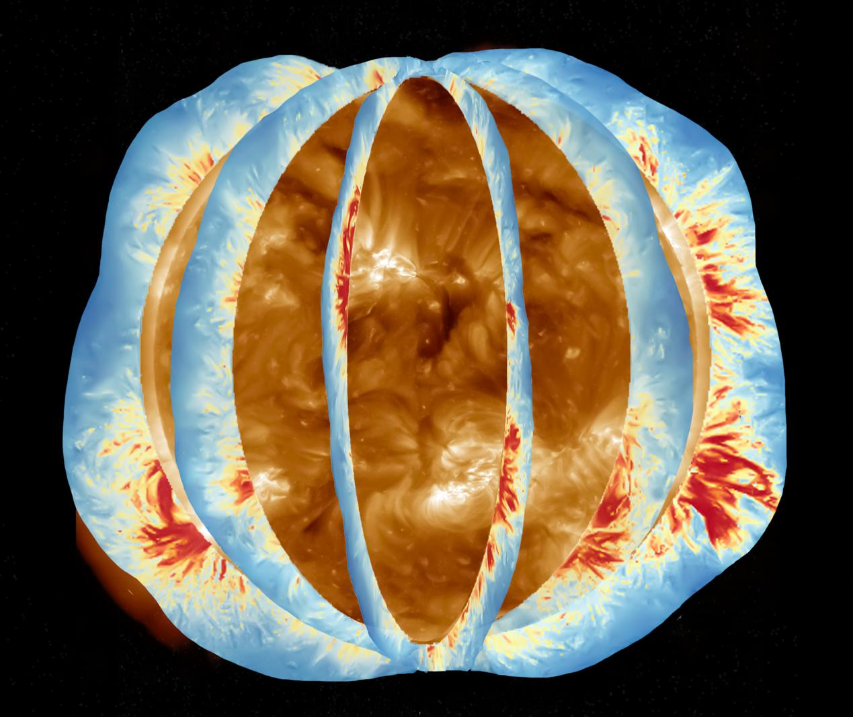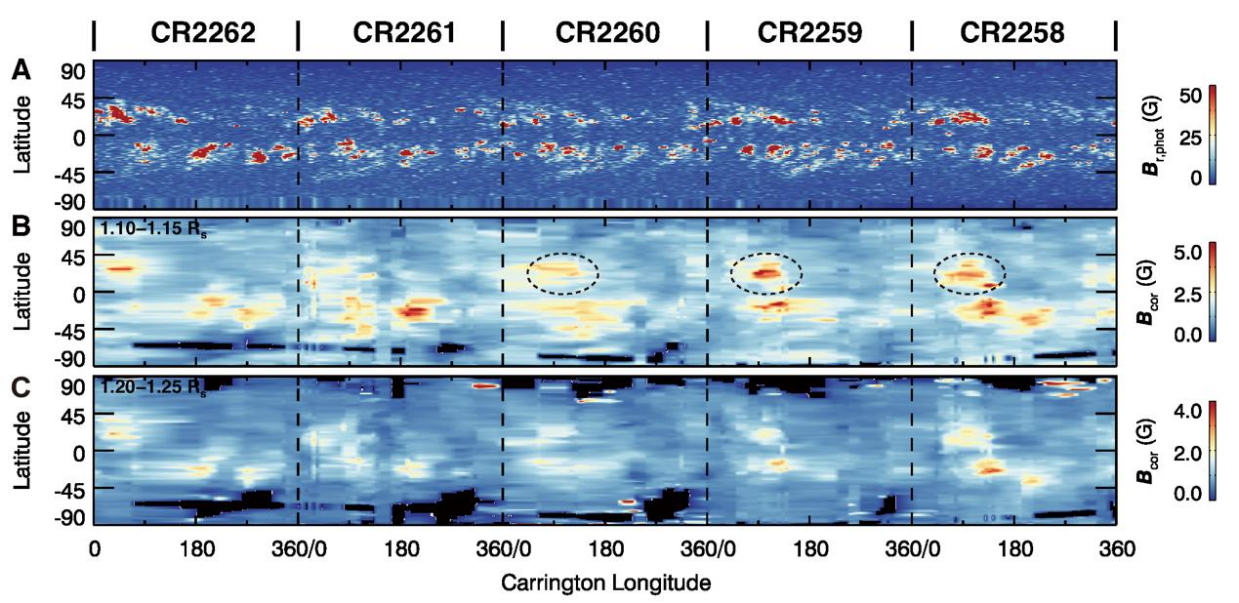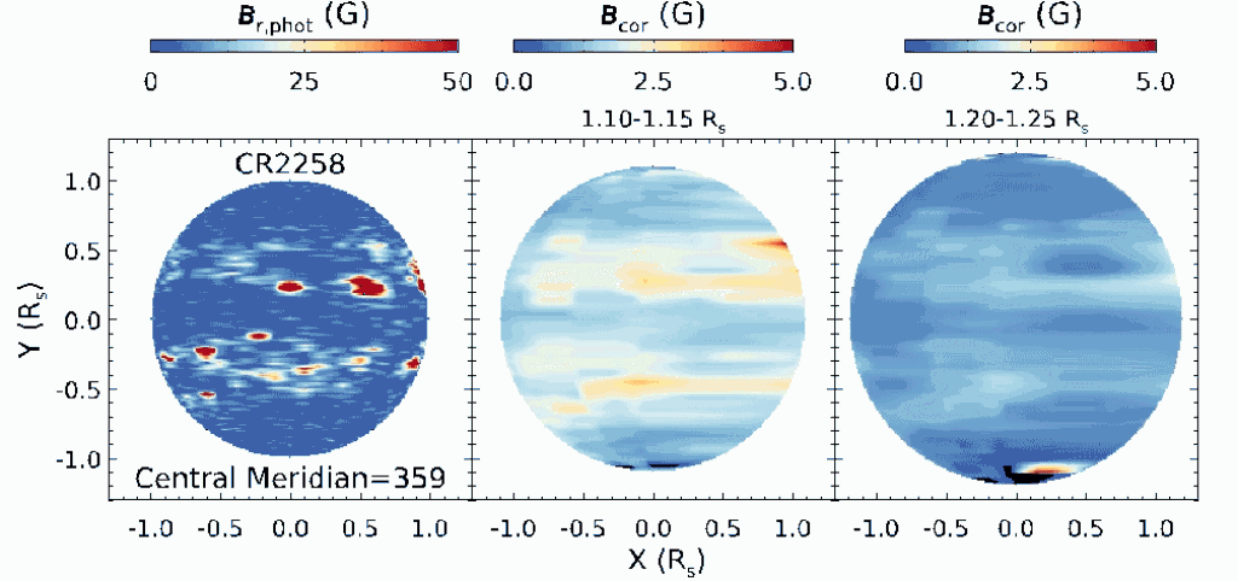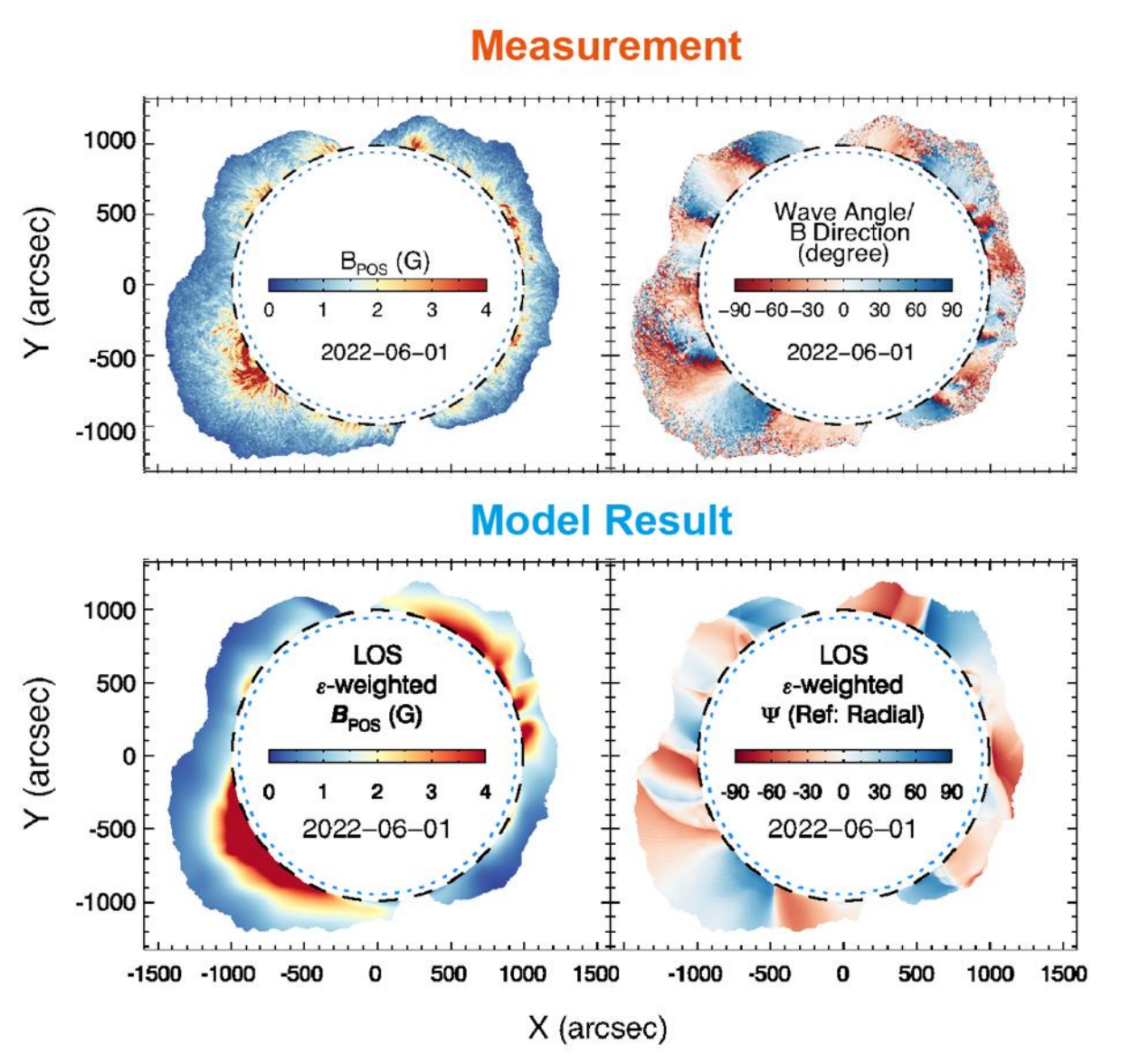
Several coronal magnetograms overlaid on an EUV image of the Sun taken by GOES/SUVI.
Peking University, October 14, 2024: For eight months, a research team led by Tian Hui and Yang Zihao from Peking University’s School of Earth and Space Sciences took near-daily measurements of the Sun’s coronal magnetic field, marking the first time that humans were able to routinely observe this largely unknown region of the Sun. Findings from this groundbreaking study were published in a research article titled “Observing the evolution of the Sun’s global coronal magnetic field over 8 months” in Science on October 3, 2024.
Why it matters:
Observation of the Sun’s coronal magnetic field has long been a challenge to scientists, due to its weak magnetism and broadening of spectral lines caused by high temperatures. Yet, it is particularly critical—the evolution of the solar magnetic field drives important phenomena like the 11-year sunspot cycle, the million-degree hot corona, and intense solar eruptions. As early as 1908, renowned solar physicist George Ellery Hale from the United States applied the Zeeman effect to measure the magnetic field in sunspots, marking the first attempt for human to measure the magnetic fields of celestial bodies beyond Earth.
The combined use of coronal seismology and data analysis in this study thus makes it possible for researchers to produce consistent and comprehensive views of the magnetic field of the global corona, which is the outermost part of the Sun’s atmosphere.
Methodology:
The team used the “two-dimensional coronal seismology” method combined with data from the Upgraded Coronal Multi-channel Polarimeter (UCoMP).
The newly equipped UCoMP coronagraph is an instrument capable of performing imaging spectroscopic observations of the corona beyond the solar limb, covering a field of view ranging from 1.05 to 1.6 solar radii from the solar center.
The team analyzed the spatial distribution, temporal evolution, intensity and Doppler velocity of spectral lines, and tracked coronal waves, thus obtaining a global map of coronal magnetic field strength and direction.
Fig. 1. The photospheric synoptic magnetogram (top), the coronal synoptic magnetogram averaged between 1.10-1.15 solar radii (middle) and the coronal synoptic magnetogram averaged between 1.20-1.25 solar radii (bottom) obtained during five solar rotations.
Fig. 2. The global distribution of the photospheric magnetic field (left panel), the coronal magnetic field averaged between 1.10-1.15 solar radii (middle panel) and between 1.20-1.25 solar radii (right panel).
Key findings:
-Using UCoMP data from February to October 2022, the team obtained 114 global coronal magnetic field maps, with measurements made approximately once every two days.
-Magnetic field strength varied from less than 1 Gauss to approximately 20 Gauss.
-Strong magnetic structures were observed to recur at similar longitudes, indicating that the presence of active longitude is also evident in coronal magnetic field measurements.
-Comparison against global MHD models revealed a high correlation between measured coronal magnetic field and model predictions in mid-to-low latitude corona, while significant discrepancies were observed in high-latitude regions and some active areas.
Fig. 3. The global coronal magnetic field strength (upper left) and direction (upper right) measured using UCoMP observations on June 1, 2022, along with the predictions of coronal magnetic field strength (lower left) and direction (lower right) from a MHD model.
Future prospects:
This first successful attempt of routine coronal magnetic field measurements will influence research on important areas such as the sunspot cycle, coronal heating, solar eruptions, space weather forecasting, and heliospheric magnetic field evolution.
However, the current method has its limitations, and other measurement methods will be needed to measure the full vector magnetic field across the entire corona, including above the solar disk. This will be a major research goal for the solar physics community over the next several decades.
Written by: Tian Hui
Edited by: Wu Jiayun



